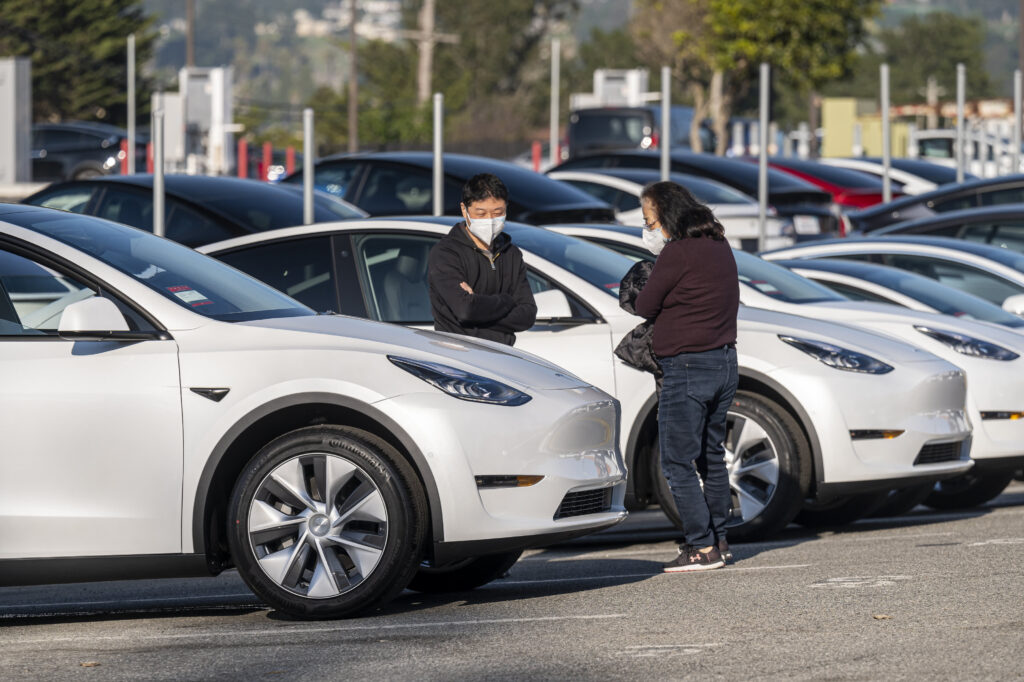Why Tesla and GM want to be big in the car insurance business

GM is moving fast, too, and building on its history of offering insurance. Today, the auto company has a traditional insurance offering in 46 states and Washington, D.C., but it is working on a safe driving behavior algorithm developed jointly with American Family Insurance with the expectation that it can be added to offerings in the insurance market, starting in Arizona, Illinois and Michigan.
Introductions in those three states will be the start of what a GM spokeswoman said in an email is the company’s “vision to offer a more fair/personalized insurance product to our customers.”
It is working on state regulatory approval for data systems developed by GM and American Family, and the company expects the approvals to be granted in the first half of 2022. It is launching more quickly in those states because of its work with American Family, but the current product is similar to what you see in-market from other insurers today. GM is the agent, with American Family Insurance underwriting the policies.
One big opportunity is to get insurance clients without adding to the $10 billion yearly spent on U.S. car insurance advertising, said Andrew Rose, president of GM’s OnStar Insurance unit and vice president for insurance innovation. That is more than auto companies spend advertising cars, he said.
Handling their own insurance, using data generated by the car, will also help GM process claims faster than has been normal in auto insurance. Instead of 18 to 25 days to settle claims, GM thinks it sometimes will know the extent of damage almost immediately and settle up fast.
“In claims, cycle time is money,” he said. “We can know sometimes in seconds. But it may not be time to tell you while the airbag is still deployed.”
While Rose says systems like what GM is developing deliver much more data, traditional insurers have been moving toward telematics for several years using wireless phone apps, according to CFRA insurance analyst Cathy Seifert said, adding that Progressive and Allstate are among the fastest adopters.
At Allstate, more than two million customers are enrolled in telematics programs such as Drivewise and Milewise. In states where the plans are approved, 21% of our auto customers are currently enrolled and 35% of new Allstate auto customers choose the plans, said David MacInnis, vice president, telematics & usage based insurance.
The technology uses phone-based technologies like GPS trails to track braking, speeding over 80 mph and driving too fast for road conditions, MacInnis said, as well as the time of day clients drive and amount of driving a customer does.
Usage-based car insurer Root went public in late 2020. Insurance upstart Lemonade also began offering usage-based insurance last year. Both companies have fared poorly as as publicly traded stocks after debuting in the red-hot IPO market of the past few years.
GM says car-based systems will be more accurate because the data will come from the car itself, and because the car itself can track factors like seat belt usage that cell phones can’t.
At Tesla, the insurance business will be “ancillary” in the short and medium term, Ives said, and more important for encouraging the purchase of EVs than as an independent profit center. Its real importance will depend on how fast truly autonomous cars are developed, presenting a safer risk profile that will let the company provide coverage as part of a broader fusion of hardware and software that resembles Apple’s famous ecosystem approach, he said.
“The goal is to be 30 to 40% cheaper for insurance,” Ives said. “That’s the endgame.”
This content was originally published here.




Responses